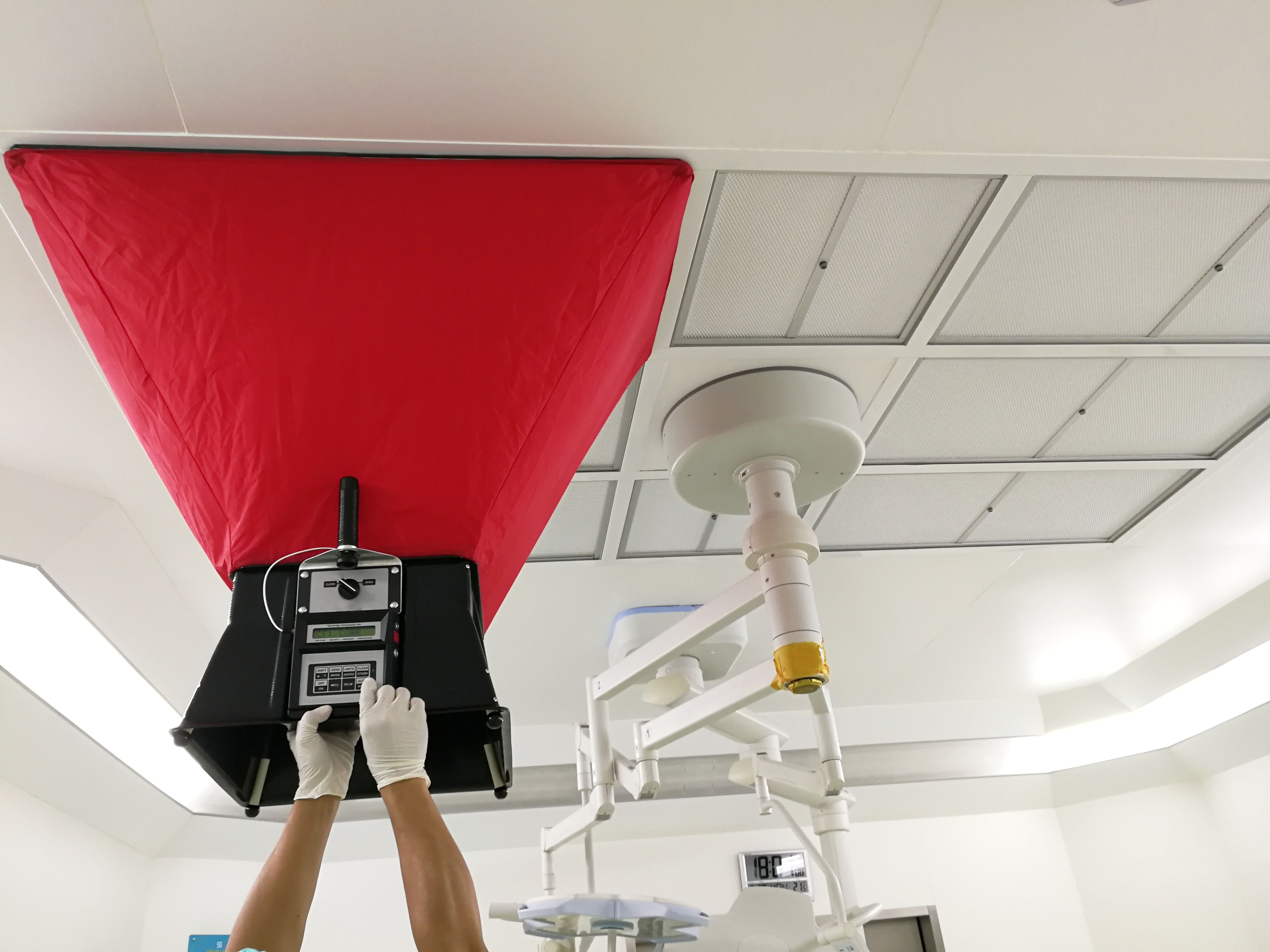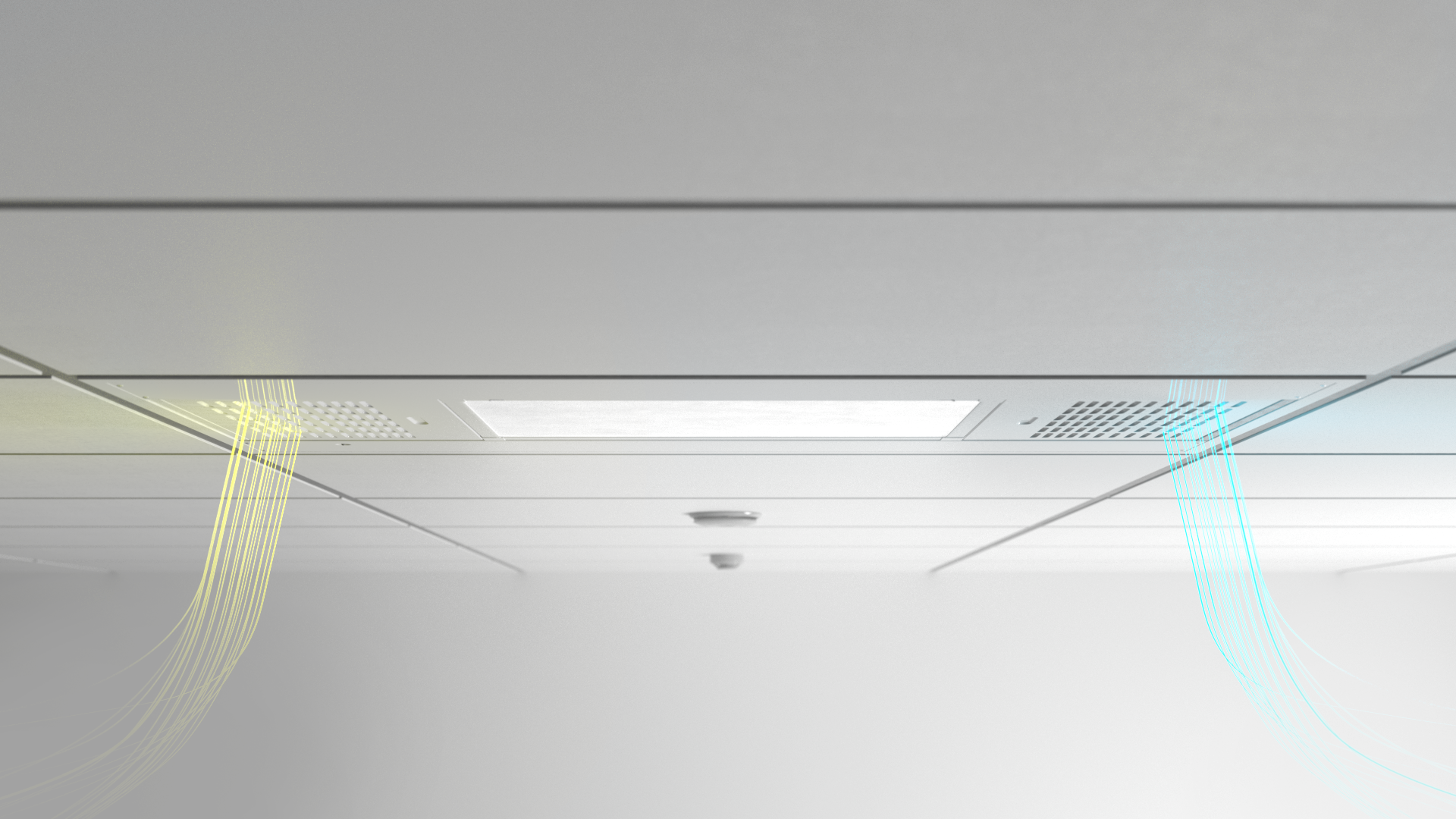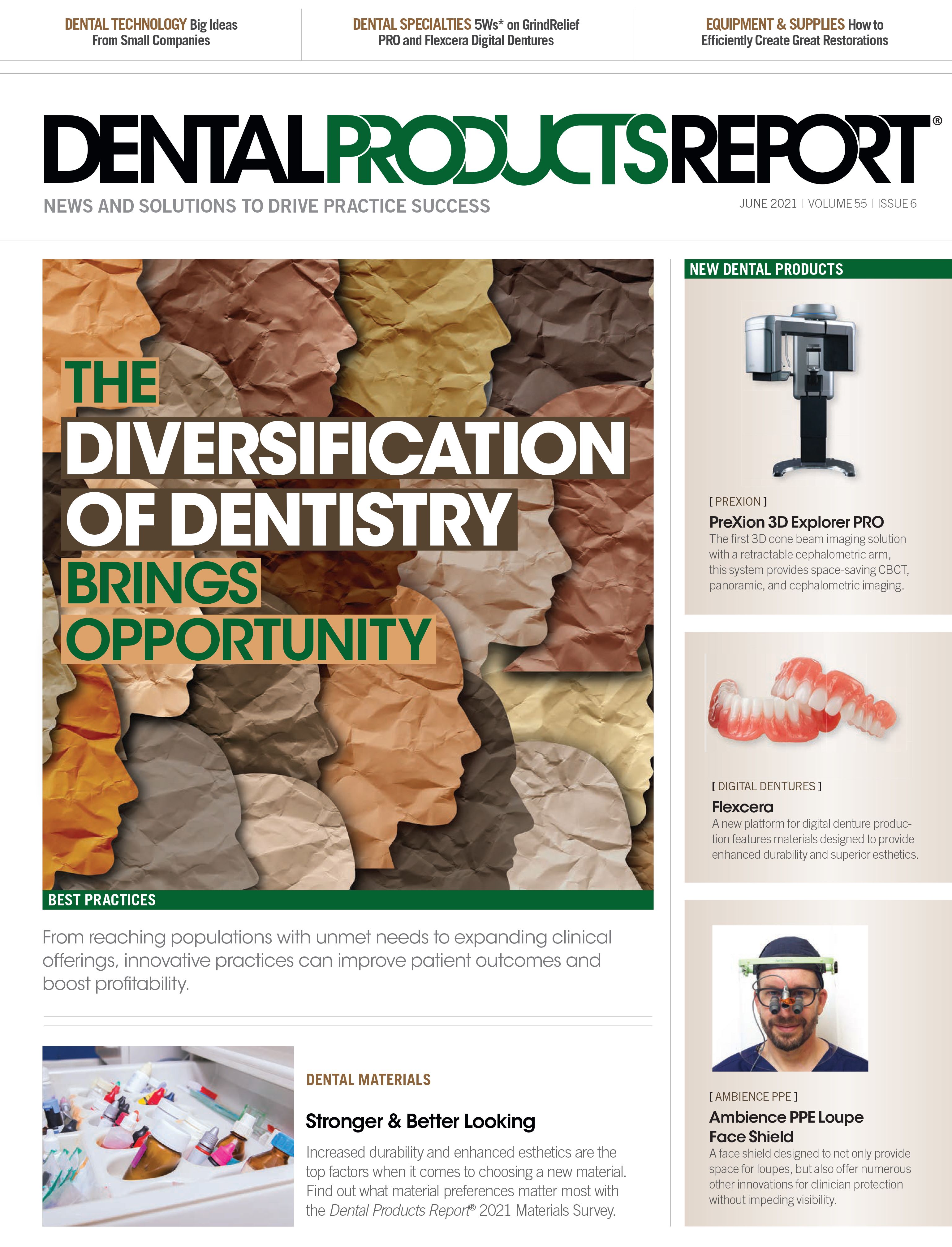Experts, Science Needed to Help Dental Practices Air on the Safe Side
With so many air flow solutions available to protect patients, staff from COVID-19, clinicians need to do homework to select the best fit for their practices.
SAKURAMOS / STOCK.ADOBE.COM

We are many months into the COVID-19 pandemic and have learned plenty of lessons along the way. By now most dental practices are fully reopened and plenty of guidelines are being followed in an effort to make both the patients and healthcare providers feel safe. But what about the air we all breathe?
Mounds and mounds of research has been completed about the importance of wearing masks, staying socially distant, washing hands and disinfecting surfaces, as well as on a variety of methods to both reduce aerosol-generating dental procedures and to protect the air inside dental practices. But it’s not easy to know how best to decipher which of the many new products and airflow solutions are necessary, and which will work best when it comes to protecting the air around us.
That’s where leaning on researchers and experts at places like the Centers for Disease Control and Prevention (CDC) for proper guidelines comes in to play. Sure you can add more portable extraoral HEPA vacuum systems to the dental practice in an effort to reduce aerosol exposures, and a number of companies have released new products in this arena in the last year alone—some as portable units and some as innovative attachments to delivery systems or with suction areas that work directly in front of a patient’s mouth. Automated UV-C air treatment systems offer another form of protection backed by plenty of research.
But before dentists invest too much into these systems, they should do some homework to know what may work best for their situation in terms of both protecting patients and staff and instilling confidence that everyone working and being treated in a practice is being protected as best as possible.
“Practices should think about improving source control. Many dental procedures generate droplets and aerosol that are often not well contained in the oral cavity. There have been several devices that have been developed to address this problem, including clear plastic barriers that cover the patient’s head, high-volume evacuators, and high-volume evacuator dental external oral aerosol suction machines. Missing from many of these devices are studies that show how these devices reduce contamination that causes droplet and aerosol dispersal,” explains the CDC’s Matthew J. Arduino, MS, DrPH, FSHEA, M(ASCP), Senior Adviser, Environmental Hygiene and Infection Prevention.
“Dental practices could also add portable HEPA filtration units to help clean the air. These units can be sized to the room and should be placed near the patient’s chair, but not behind the dental healthcare personnel (DHCP) or the patient’s mouth. The HEPA filtration unit should also not pull air into or past the breathing zone of the DHCP, but instead should be placed to blow air away from the patient and healthcare worker,” Arduino adds.
Another risk reduction measure is upper room ultraviolet germicidal irradiation (UVGI) which has been used for many years as part of tuberculosis control in healthcare facilities.1-3 CDC has recently published some guidelines on the use of upper room ultraviolet germicidal irradiation (UVGI). Design, installation and testing of these systems require both a qualified HVAC professional and a reputable UV-system manufacturer. When selecting a device, Arduino suggests you ask for proof of EPA registration and for a portfolio of UVGI installation projects. UVGI works in upper room air spaces, and when installed correctly should not be reflected into occupied spaces where it can cause temporary eye or skin damage. For installation, a facility requires a minimum ceiling height of at least 8.5 feet, and a way to direct air upwards to the device.
Dr. Linda Lee, Chief Medical Affairs and Science Officer for UV Angel, also emphasizes the need for dentists to do their due diligence when looking to add something so important to their practices.
“Probably one of the more important things the dentist can look at is peer reviewed studies, studies where the product was actually used,” she says. “See what the scientific community of peers are saying about that product performance. If there are claims made by these different sets of data points, you can be pretty sure that the products are probably going to perform properly.”
Then practices can take some of the guesswork, or the expense, out of constantly monitoring. The problem with constantly collecting environmental samples is not only the monitoring itself but then interpretation of the data. What is a safe level of colony forming units, or CFU’s?
“So I always try to get people to pick a product based on the product claims and their desired outcome. This approach and outcome can be supported by the peer reviewed validation. Also, no matter what the product is, it requires some sort of maintenance.”
So, understanding things like the need to change filters or changing carbon or UV—understanding the maintenance requirements around the product is important to keep it working properly and correctly.
“When you buy a product it’s important to understand all of the components to keep it operating properly. Claims are made based on the equipment operating properly, and as long as you keep it well maintained, you should be able to realize those performance claims,” Dr Lee says.
Designed directly into a traditional ceiling light fixture, UV Angel Clean Air™is described as an unobtrusive environmental treatment system that uses ultraviolet light to automatically and continually treat the air. Ultraviolet lights are used throughout health care and other environments to neutralize microorganisms on surfaces, in water, and in the air.
“In the case of the UV Angel product, we know right now the current coronavirus is highly transmissible, but secondly is its volume, number of pathogen in the air and on non-high touch surfaces,” Dr Lee says. “We know that a susceptible host is a moving target, and certainly there are high volumes of virial pathogens in the environment from infected people.”
Dr Lee compares this to hand washing: “When you think about washing your hands, nobody washes their hands and says, ‘Oh, my hands are now sterile’. What you did was you removed a certain volume of pathogens off your hands. By removing or reducing the numbers of pathogen on your hands you may prevent sickness if you were to contact your nose, mouth or eyes with your hands. And so, just like with all technologies, they work together to be layered to reduce the overall amount or burden of pathogens you're being exposed to.”
While nothing can provide ultimate, guaranteed protection against all viruses, using proven methods can indeed drastically reduce the risks.
Designed directly into a traditional ceiling light fixture, UV Angel Clean Air™is described as an unobtrusive environmental treatment system that uses ultraviolet light to automatically and continually treat the air.

“So with the UV Angel products, we can see between 60 to 80% reduction in the amount of surrogate bacteria in the environment,” Dr Lee adds. “We, like everyone else, do not know the number that is now safe as that depends on the host. But for many people, reducing that amount in the air and then when you add in the surface cleaning and the hand washing and all the things that people are doing, they are all layered to offer a higher level of protection. Nothing's 100% because it depends on the person, but you want to deliver that best level of protection.”
Steps to Help
The CDC offers guidance on steps dental practices can take to return to normal and see more patients on a regular basis. These include both the:
- Interim Infection Prevention and Control Guidance for Dental Settings During the Coronavirus Disease 2019 (COVID-19) Pandemic, and
- Ventilation in Buildings Guidance
From the building standpoint one must understand the design and layout (floor plan) of the clinic and the HVAC system(s). So, depending on the layout of the building where the clinic is located, consult your facility engineer or your HVAC professional to assess your system to see if any of the following changes can be made:
- Increase the introduction of outdoor air
- rebalance system to increase airflow to occupied spaces
- turn off any demand-controlled ventilation controls, and
- improve air filtration.
Improving introduction of outdoor air can only be achieved by opening windows and doors as well as the use of fans. This approach may or not be feasible, depending on location facility design, whether windows open, the location of doors, and the season of the year. Improving filtration of the HVAC can be done by increasing filtration rating of filters to MERV 13 and ensuring that filters are fitted correctly and there are no leaks. Also, make sure that while the premises are occupied that the bathroom exhaust fans are operating continuously. Before making any changes, consult with an HVAC professional. They can help configure air flow and optimization of the performance of the system.
Staying Safe and Confident
Some staples of protection will remain in play for a while, while newer methods to monitor and protect our air may have a bigger impact in the future.
“We are going to continue to see the use of face coverings in the waiting rooms and face masks by employees, for the foreseeable future,” Arduino says. “We cannot visibly see airflow, at least not in the sense of a laboratory where we use ‘tell tails,’ a piece of tissue paper at the top of the opening in the door that shows us the room is still negative to the hallway. However, there may be some visual changes that are noticeable, for example, the presence of a portable HEPA filter unit in the waiting room and treatment area, or multiple HEPA units, depending on facility design. There might also be the presence of upper air UVGI units. The practice may offer brochures, display signage, or even email newsletters explaining how the air flow is safe and the units are working to provide a safe environment in the dental office.”
Once a practice implements these safety solutions it’s important to let everyone know. That is, market to your patients the efforts you’ve made to protect them when they visit your practice for care. Equally important, is to let your staff know you’re doing all you can to keep them and their families safe.
Another great source of information is New York University's School of Global Public Health. Jack Caravanos, DrPH, CIH, is a clinical professor of Environmental and Occupational Health in NYU's School of Global Public Health. He teaches graduate students to become industrial hygienists, essentially workplace safety and health experts who identify evaluating control, chemical, biological and physical hazards.
Caravanos, who served as an independent reviewer for the Grignard Pure Antimicrobial Air Treatment system, agrees with Dr Lee in that air source control is just one of the many necessary steps dental practices need to take to offer up the safest environments possible.
“I think it's a cascade of an array of different interventions and controls, and definitely methods to improve general ventilation,” he says. “We can improve ventilation with some filtration instead of the usual filtering units and with more air changes per hour. So, there are definitely a number of things dental practices could do. Some are within their control, like hand hygiene, masks and disposable PPE, and of course vaccination.”
He believes the Grignard Pure system, which has a partnership with SS White Dental, can play a big part in practice’s safety measures. The system is said to be the only EPA-regulated solution that provides continuous protection, killing SARS-CoV-2 virus particles as they enter the air from talking, coughing, sneezing, etc., significantly reducing what is the primary cause of infection. Grignard condenses and penetrates the virus, attacking its protein and membrane structure, and is reportedly safe for patients, practitioners, and the environment.
“I really believe this is a very safe, very effective system,” Caravanos says of the Grignard Pure Antimicrobial Air Treatment system. “It’s an aerosol airborne disinfectant and there aren't too many of these systems currently available.”
There are other technologies that are considered emergent technologies. These may also be registered or approved devices, but the CDC does not recommend for or against their use. There is insufficient peer reviewed data to draw any conclusions about these emergent technologies. If users choose to use these devices, they should carefully review the manufacturer claims and data, according to Arduino.
They can also review ASHRAE’s Healthcare COVID-19 Resources at https://www.ashrae.org/technical-resources/healthcare
References
1. CDC. Guideline For Environmental Infection Control in Healthcare Facilities, 2003 (July 2019 Update). Accessed April 23, 2021.
2. CDC. Guidelines for preventing the transmission of Mycobacterium tuberculosis in health-care facilities. MMWR 1994;43(No. RR-13):1–132. Accessed April 23, 2021.
3. CDC. Environmental Control for Tuberculosis: Basic Upper-Room Ultraviolet Germicidal Irradiation Guidelines for Healthcare Settings. DHHS (NIOSH) Publication No 2009-105 Accessed April 23, 2021.
